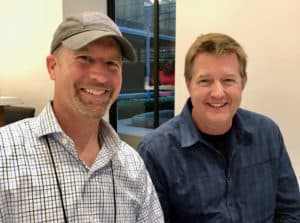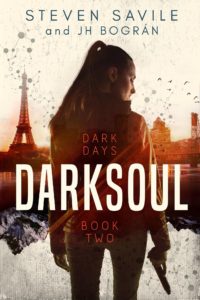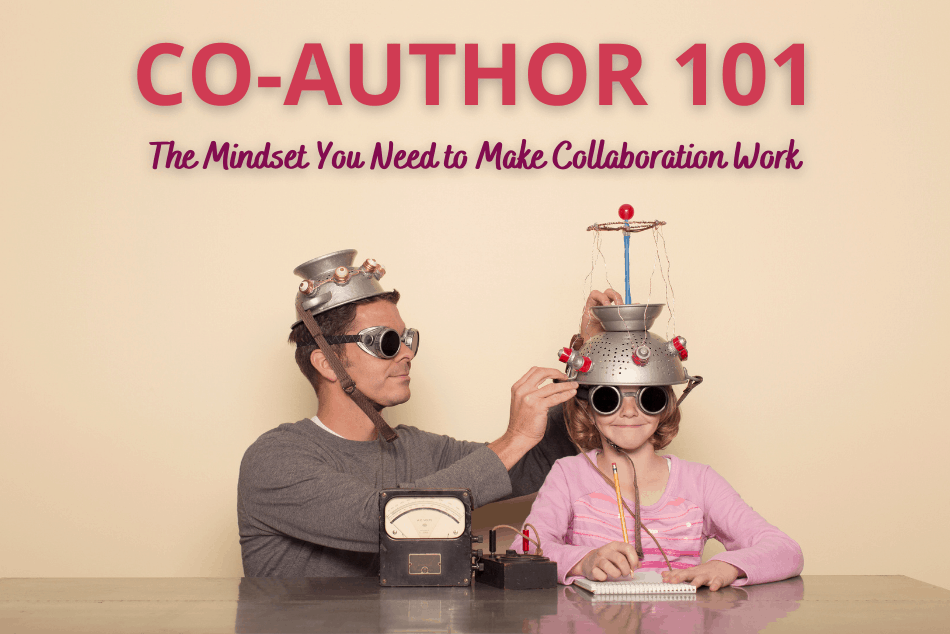They say that writing is a lonely profession. While there is truth in that statement, some of its force is diluted when two or more authors collaborate on a project. When two writers work well together, such a collaboration can prove fun and lucrative–and a hedge against the loneliness of this calling.
Step into the Writers’ Room.
Ironically, my first professional experience in writing happened in the form of penning a TV serial with two other writers. Rumor has it that Friends benefited from a roster of over a dozen writers. That was a luxury the independent production that hired us couldn’t afford. The three of us, inexperienced writers, demonstrated a streak of creativity as we stumbled along and learned the lessons the hard way. And yet, we wrote what became the first commercial TV series in Honduras.
Fast forward a few years, and I embraced my true passion, writing short stories and novels as a solo author, but then I had the opportunity to write with Steven Savile, which was a radically different collaboration experience from before.
If you’re considering working with another author, here are a few pointers I’ve put together from my own experience, and with a little help from my friends.
There is no “I” in “Co-authors.”
Writing partnerships come in different shapes and forms. In some cases, the partnership has equal standing for both authors such as Andrews & Wilson who pen the Tier One Series, or Preston & Child who pen the Agent Pendergast Series.
Douglas Preston says that “Lincoln Child and I come up with an idea, and then we have to brainstorm it to arrive at a plot. As most authors know, there is a huge journey from the idea to the plot. So we spend a lot of time on the phone, discussing, arguing, talking about characters and situations, until we’ve hammered out a basic plot with characters. This we write up into a narrative. As we write, we refine and revise the plot enormously.”

For their part, Andrews & Wilson begin each novel with a “What if…” question. In the case of Tier One, that question was: What if America’s premier counter-terrorism direct action unit—the Tier One Navy SEALs—were wiped out by the very terrorists they were trying to take down?
The “what if” question is both the hook and the theme that the rest of the plot is fleshed out around. After the question is asked, they write their books using the Three-Act Structure.
Brian Andrews explains their method: “We write third person multi-POV thrillers. Our co-authoring methodology is brainstorming the plot together, then we generate a very basic chapter outline, and last we divide and assign chapters based on POV.
“The best analogy is probably parenthood. We are both husbands and fathers, and we treat this collaborative work the way we do our families. As parents, you don’t say ‘well, these two kids are mine and those are yours.’ Instead you work as a team and take ownership and pride together (and responsibility for failure) to parent the best human beings you can. Likewise, our books are our stories, created in complete collaboration by Andrews and Wilson, to create the best story we can.”
Know what you’re getting into.
Robin Burcell, who writes the Clive Cusler’s Fargo Series, recalls one of the first lessons she learned. “Having a co-author is a bit like having a critique partner who has veto power,” she says. “Just because I thought something was a great idea, it didn’t mean that Clive did. The problem arises in that neither of you can see into the other person’s head. What you put down on the paper might not be what your partner was looking for at all. Communication is very important. And if your partner does have veto power, and gets that red pencil out, crossing through lines of painstakingly researched or crafted text, give yourself a day to get over it, then move on.”
In my case, the intellectual property belongs to Steven Savile. After I read his novel Sunfail I wrote him complaining about the fate of one of the characters. Two years later he offered me the opportunity to write that character’s story in the novel Darksoul.

“On a most basic level, you need to know your parameters,” Savile says.
Savile and I worked out the details of the story and how the partnership would work right from the start. Dare I call it a pre-nup agreement?
They are called Red Flags for a reason.
Early warnings are hard to spot because you really don’t know until the process has started—it almost sounds like marriage, doesn’t it? The only thing that really matters is getting the project over the finish line without burning out.
“Is the partner ducking emails, are they arguing too hard with your ideas, etc.,” Savile says. “I’ve collaborated with close to a dozen writers. It’s only gone wrong once and that was because we made agreements sorting stuff out during the purple haze of creation and then didn’t stick to them (you write first half, I write second) which led to a sense of ownership and not wanting to hand over, so I was bought out of the project. It happens.”
Check your ego at the door.
This important tidbit comes courtesy of Douglas Preston: “When we finish a novel, we swap the work and rewrite each other. That’s important not only to make sure our writing styles are blended, but also to tighten and improve each other’s work. As you might imagine, this takes a lot of trust in the partner’s judgment.”
Trust and respect are the key elements for any working relationship, and they are not exclusive to writing. When you both keep that in mind, you’ll have the mindset you need for a sucessful collaboration.

José H. Bográn is the internationally published author of novels, short stories, and scripts for film, plays, and television. José’s genre of choice is thrillers, but he likes to throw in a twist of romance into the mix. Although he’s the son of a journalist, he ironically prefers to write fiction rather than fact. He’s the Assistant Editor for The Big Thrill, and writes the occasional book review for The Washington Independent Review of Books. He’s a member of the Crime Writers of Color, Mystery Writers of America, Sisters in Crime, the International Thriller Writers, and the Short Mystery Fiction Society where he currently serves as Vice President–and signs his emails with the motto: “I never tell lies; I only write them.”





